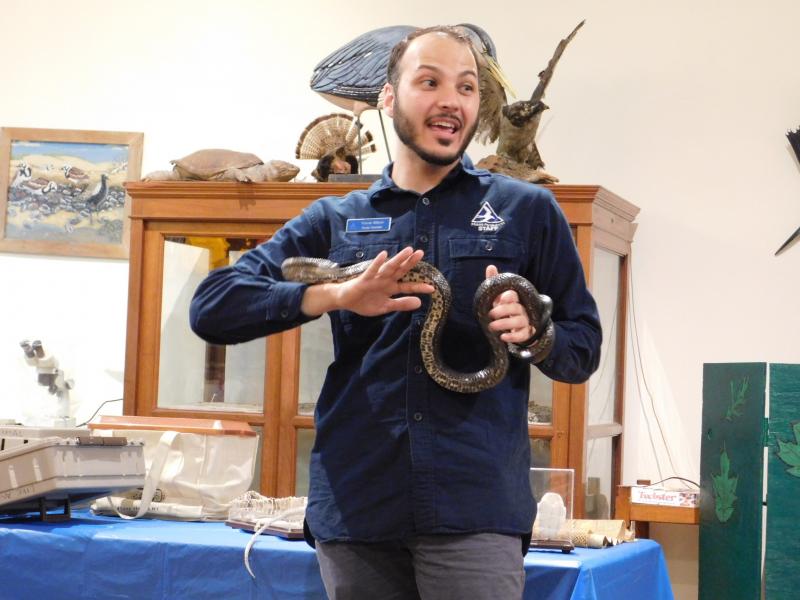Forked tongues and sealed shells: meet the reptiles of Massachusetts
Why do snakes have forked tongues anyway?
According to Blue Hills Trailside Museum naturalist Vinny Milone, it's to sense direction. He explained how it works to a group of nature lovers of all ages on Friday night, at Marion's Natural History Museum.
Milone started the night by asking the younger portion of the audience if they knew of any reptiles.
Of course they did. "Dinosaurs!" came the enthusiastic reply.
"Well that's not wrong," Milone said with a smile, "but let's talk about reptiles who are here today."
With dinosaurs addressed, out came the snakes. According to Milone, snakes can sense direction with both sides of their tongue - if a rabbit is to their left, they sense it more strongly in the left fork. They can even sense how far away their prey is.
To demonstrate, Milone brought along one of his favorite creatures at the Trailside Museum, a cheerful black rat snake. Black rat snakes, said Milone (snake curled happily around his arm), are the largest snakes in Massachusetts, measuring upwards of two feet.
Milone passed around a snakeskin to demonstrate how a snake's scales actually work - while smooth one way, if you run your hand the other way, you run into friction. The scales are set up like roof shingles, one partially covering the next. You might think that the reasoning (like roof shingles) is to keep water out. Actually, though, the scales are meant to keep water in.
Snakes, however, weren't the only reptiles on display.
Milone also had a number of turtles with him, including two bog turtles and two box turtles. The turtles, while small, were all between the ages of 15 and 20. "They don't get very big," Milone explained.
They do, however vary, even in the same type. When Milone brought the second box turtle out, there was surprise in the audience: "One's a blonde!" Indeed one turtle had a much lighter, more yellow shade than the other.
Where do turtles go in the winter? According to Milone, the answer is underground, but not just anywhere. Turtles often bury themselves up to a foot beneath a pond. Although, he noted, on warm winter days, they can often be seen below the ice, moving around.
Now is the season for turtles and snakes to be crossing the road, and Milone said that the easiest way to hold a turtle while helping it across the road is to "hold it like a hamburger". Or at least, the tray you're carrying to the table. Holding your fingers far back on the shell will help prevent scratches and bites.
"We have to protect them," Milone said enthusiastically. "Their habitat is disappearing. The more people that know, the more animals we can help."
















